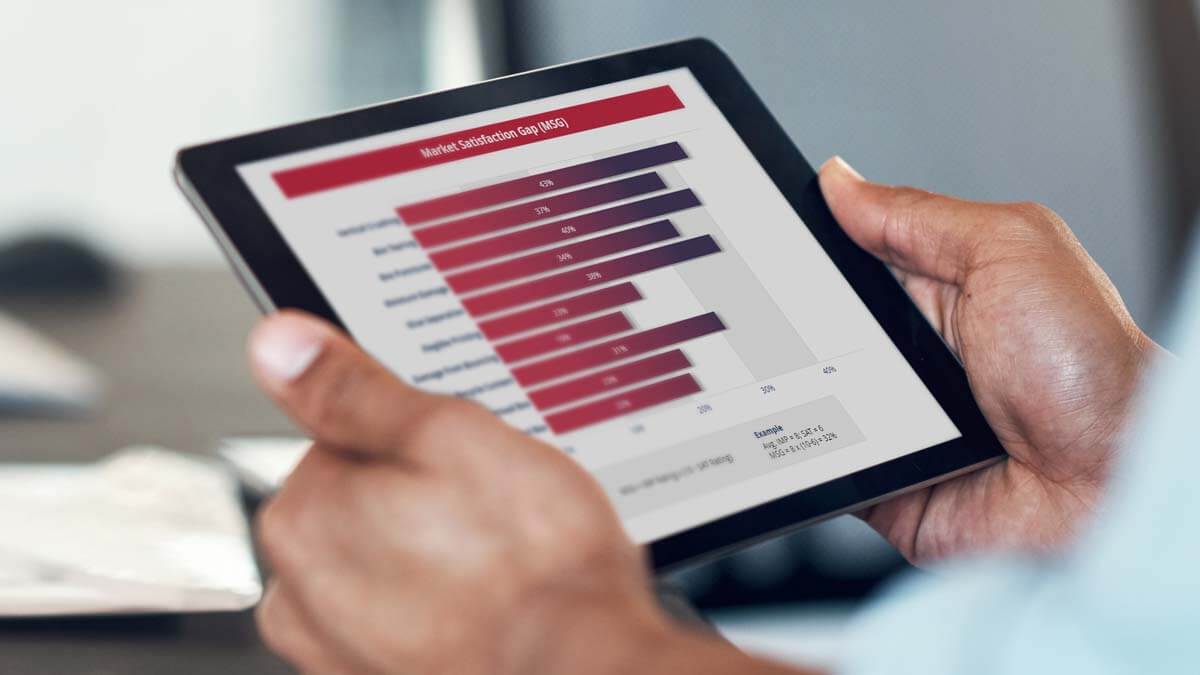Here’s the test: When you look at projects in your new product pipeline, do some have sizeable commercial risk, not just technical risk? If so, you need to start conducting quantitative customer voice-of-customer interviews. These help you nearly eliminate commercial risk, based on Market Satisfaction Gaps. Here’s the point: If you’re a B2B supplier, there’s simply no reason to put up with much commercial risk once you move into the development stage. Check out over a dozen real-life examples of their use at www.aimcasestories.com.
More in white paper, Market Satisfaction Gaps
For B2B companies I believe this practice is requiring quantitative, unbiased, unfiltered evidence of customer needs before starting to develop a new product. Today, wishful thinking and confirmation bias greatly distort suppliers’ views of what customers want in a new product. One way to change this? Require Market Satisfaction Gaps for all significant product development. These reveal which outcomes the market is most eager to see improved. Check out over a dozen real-life cases of their use at www.aimcasestories.com.
More in white paper, Market Satisfaction Gaps
We researched this question with a survey of 300+ B2B professionals, examining these VOC skills: 1) Secure interviews, 2) Proper interviews, 3) Impress customers, 4) Uncover all needs, 5) Probe for meaning, 6) Probe for value, 7) Quantitative VOC, 8) Virtual VOC, 9) VOC debriefing, 10) Prioritize needs, 11) Segment market, and 12) Business case.
Can you guess which skill most differentiated the winners and losers in terms of new product development success? It was #10, Prioritize customer needs. The #2 skill wasn’t even close. So if you’re not conducting quantitative interviews to prioritize customer needs with confidence, you’ve got some serious “upside” to pursue. See 2-minute video, Quantitative interviews are a must.
More in white paper, Market Satisfaction Gaps.
Market Satisfaction Gaps (MSG) come from teams’ quantitative interviews, and are reliable evidence of which outcomes customer do—and do not—want “fixed.” When you require MSGs as the “admission ticket” for projects to enter the costly product development stage, 3 things go away: 1. Confusion (misunderstanding customer needs and their priorities), 2. Bias (altering customer needs to better fit our pre-conceived solutions), and 3. Filtering (cherry-picking customer needs to match those we hoped to hear.)
More in article, Market Satisfaction Gaps… your key to B2B organic growth




